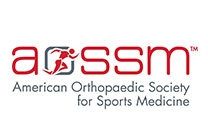What is Proximal Hamstring Tendon Repair?
Proximal hamstring tendon repair is a surgical procedure used to reattach one or more hamstring tendons that have partially or completely torn away from the ischial tuberosity, the bony prominence at the base of the pelvis. These injuries often occur due to sudden, forceful movements or trauma and can lead to significant pain, weakness, and loss of function.
When is Proximal Hamstring Tendon Repair Recommended?
Surgical repair may be recommended in the following cases:
- Partial tears that do not respond to conservative treatment
- Complete tendon avulsion from the ischial tuberosity
- Persistent weakness or pain despite rest and therapy
- Athletes or active individuals needing full strength and mobility
- Significant tendon retraction, typically more than 2 cm
How is Proximal Hamstring Tendon Repair Performed?
The procedure is typically performed under general anesthesia. An incision is made near the lower buttock to access the injured tendon. Dr. Bharam locates the avulsed tendon and prepares the ischial tuberosity by clearing it of scar tissue. Suture anchors are then inserted into the bone, and the tendon is securely reattached. In some cases, endoscopic (minimally invasive) techniques may be used.
Recovery after Proximal Hamstring Tendon Repair
Recovery involves a period of restricted movement to allow healing. Patients may use crutches and wear a brace to limit hip flexion. Physical therapy usually begins within a few weeks and focuses on restoring range of motion, strength, and function. Full recovery may take 4–6 months or longer.
Risks of Proximal Hamstring Tendon Repair
Like any surgery, there are potential risks, including:
- Infection
- Nerve injury
- Blood clots
- Re-tear or incomplete healing
- Stiffness or prolonged weakness
Benefits of Proximal Hamstring Tendon Repair
Surgical repair offers several advantages:
- Restores tendon-to-bone attachment
- Improves strength and mobility
- Reduces chronic pain
- Enables return to sports or active lifestyle
- Prevents long-term disability











